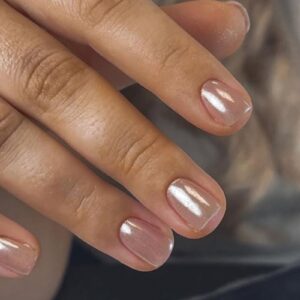
The differences between an allergy & irritation
By Guest Writer | 27 July 2020 | Expert Advice, Feature

Caroline Rainsford, head of scientific & environmental services at the CTPA, reveals the differences between allergies and irritation and how to spot them…
 People often describe any type of reaction as an ‘allergy’, especially when talking about reactions to cosmetics. In fact, the two main types of reactions to cosmetic products are ‘irritant’ and ‘allergic’ contact reactions, which are completely different.
People often describe any type of reaction as an ‘allergy’, especially when talking about reactions to cosmetics. In fact, the two main types of reactions to cosmetic products are ‘irritant’ and ‘allergic’ contact reactions, which are completely different.
‘Irritant’ reactions
Most of us know what it’s like to have irritated skin. It can be itchy, dry and sore, especially when the weather turns colder and the heating can make the air in our homes and salons dry.
Irritant reactions are the most common reactions and many people will experience an irritant contact reaction at some time to something. Put simply, on exposure to an irritant, the majority of exposed people will react by showing signs of redness, swelling, itching and so on. In general, irritant reactions are relatively minor problems, which resolve quickly once the irritant has been removed from contact with the skin.
An irritant reaction could be a complete one-off, where you don’t experience the same issue again and are not really sure why it happened.
On the other hand, your skin might react if it has come into contact with a large amount of an irritating substance. However, for salon professionals, a common cause of irritation can be repeated exposure to weaker irritants such as detergents, soaps or even just water from regular hand washing.
‘Allergic’ reactions
Allergic contact reactions are less common than irritant reactions. To have an allergic response, the immune system needs to be involved, which explains why some people will develop allergies to a given substance and others never will; we all have a different genetic make-up.
In theory, almost anything can be the cause of an allergy to someone. In practice, however, certain substances are more likely to cause allergies than others. We often hear about allergies to particular food substances like nuts or shellfish.
Within cosmetics, there are also certain classes of ingredients that are more likely to lead to allergic reactions than others, such as fragrance, acrylate monomers used in artificial nail products and p-paraphenylenediamine (PPD) in hair dyes. According to the British Association of Dermatologists, it’s thought that around 4% of people in Europe are allergic to fragrance. It is generally estimated that between 0.3-1% are allergic to PPD.
Allergies aren’t going away, in fact studies show that they are on the rise.
 The first time that someone comes into contact with the substance to which they will become allergic, it triggers a complex process in the body. The process results in the production of immune-response cells, which are specifically matched to the substance.
The first time that someone comes into contact with the substance to which they will become allergic, it triggers a complex process in the body. The process results in the production of immune-response cells, which are specifically matched to the substance.
However, you will have no idea that this has happened. It is only when you are exposed to the same substance again that these immune-response cells will be activated and cause the inflammatory response, which is the unpleasant allergic reaction that you notice.
The starting material used in liquid & powder (L&P) and UV gel nail systems, known as acrylate monomers, can lead to allergy over time if exposure to the skin is high enough. That’s why it’s really important to take steps to avoid skin exposure.
The resulting properly cured artificial nail doesn’t pose a risk of allergy. The acrylate monomers are used because they are essential building blocks of L&P and UV gel nail systems.
What to do if you or your client has an allergic reaction
In practice, most reactions turn out to be irritant reactions and suggest that the particular product and your skin are not compatible. Such reactions will be temporary and mild, usually with a little redness, itching or other slight discomfort.
However, you should always contact the manufacturer (careline or helpline numbers or other contact details that are provided on the pack), so that they are aware that someone has experienced a reaction to their product. They will then be able to advise you further on what action to take next. If the reaction doesn’t go away or you are otherwise concerned, you should visit your GP.
Your GP may refer you to a skin specialist, such as a dermatologist. A dermatologist will be able to diagnose the cause of the problem, advise on how to treat it and help you to avoid further reactions in future by advising on the ingredient(s) that you should avoid.

Read the latest issue









